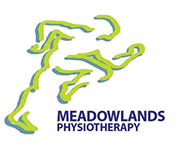The Importance of Fall Prevention
Did you know that falls are the leading cause of injury-related hospitalizations among older adults in Canada, with 20-30% of older adults taking a fall each year? How about the fact that falls are the leading cause for hospital admissions due to injury in children aged 0 to 14? Falling is more common than you’d think, and its effects can be detrimental. It’s for this reason that fall prevention is a necessary – despite often overlooked – step to take.
Here at Meadowlands Physiotherapy, we just finished up giving one of our fall prevention workshops. If you had a chance to join us, thank you for coming! If you didn’t, here’s an overview of the basics – and keep an eye out for our next workshop!
How Do Falls Usually Happen?
The majority of falls take place during the day, and 56% of falls occur outside of the home – in the yard, on the street, or in a public place. Those that do take place within the home typically occur in the bedroom, the kitchen, or the dining room, with surprisingly few falls taking place on stairs or involving ladders or step stools.
These statistics go to show that falls tend to be less dramatic in nature than we typically think, and more likely to occur in daily life while taking part in mundane activities. Here are some more statistics, for a more comprehensive breakdown. Everybody is a fall risk – it’s true! But of course, the effects of a fall can vary from person to person.
What’s the Big Deal About Falls?
When you fall, your body undergoes an unexpected – and often forceful – impact with the ground or another surface. This often results in bruises, scrapes, muscle soreness, and surface cuts. In more serious cases, falls can produce fractures, broken bones, and twisted joints.
Approximately 10-20% of all falls results in fractures. Falls that occur indoors are more likely to result in a hip fracture, whereas those that take place outdoors are more likely to result in a forearm fracture. With that, not every person is at the same level of risk. Senior citizens are far more at-risk of experiencing significant injury as the result of a fall, as are those with osteoporosis. In fact, people with osteoporosis are not only more likely to experience injury as the result of a fall, but they’re more likely to fall in the first place due to muscle weakness, spine kyphosis, or decreased postural control.
Fall Prevention Techniques
So, how do we actually avoid falling in our everyday life? Staying aware of our surroundings is a great start (watch out for ice this winter!), and here are some other relatively simple steps we can take to reduce our risk of experiencing a fall and injury:
- Stay alert. Drowsiness or sleepiness increases our likelihood of taking a tumble, so make sure that you’re alert and aware of your actions.
- Keep prescriptions up-to-date. If you’re someone who uses glasses or hearing aids, ensure that your aids are functioning well and updated to your latest eye test or hearing test. This helps you to remain aware of your surroundings, and avoid potential dangers.
- Be aware of side effects. Sometimes we can’t help but take medications for particular ailments and conditions, so make sure that you know about the likely side effects associated with those medications. If your medication is known to make users sleepy and dizzy, and you’re unaware of that particular side effect, you’re unable to properly account for that and take measures to protect yourself from falling.
- Wear suitable footwear. Choosing the right footwear can make all the difference. Make sure that your shoes fit you well, are non-slip, and are not severely under- or over-sized. Also, choose footwear that suits the occasion – no stilettos for a hike, please.
- Stay in shape. Muscle weakness is a known factor that contributes to increased fall risk. Stay in shape, and keep your muscles and posture strong!
- Use help if needed. There are tons of assistive devices out there to help anybody who needs it. Ask your doctor or physiotherapist about using a cane or a walker, and ensure you have one that is the correct size.
Reach Out!
For more information on the effects of falling and how to prevent falls from occurring, reach out to us! Or, if you have endured a fall and are in need of physiotherapy to aid you in your recovery, we can help you with that as well. Contact us today to discuss your needs!

